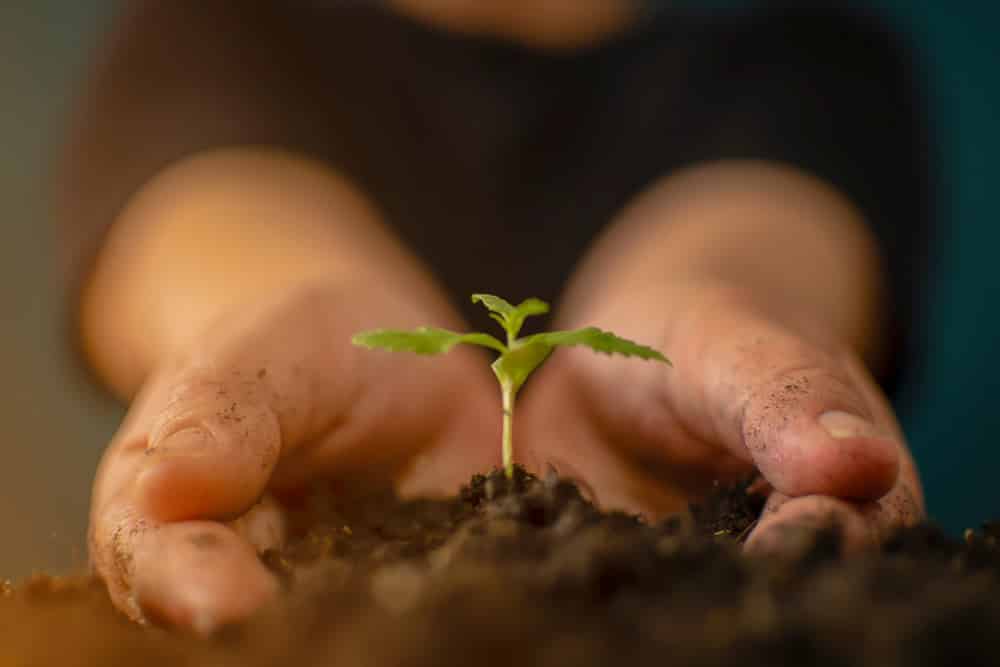Hemp Growing and Farming To-Do List: Month 1
Secure Your Hemp Genetics if You Haven’t Already…It’s Not Too Late!
Blue Forest Farms utilizes advanced analysis and breeding technology to create high CBD strains that are optimized for a variety of growing climates. Our feminized hemp seeds exhibit high germination rates and produce high levels of CBD, while remaining complaint. Additionally, they display unprecedented uniformity in the field as well as during post-harvest processing. BFF genetics are a great option for farmers seeking to eliminate some of the guess work that comes with growing hemp. Reference code “SUMMER” when speaking with a BFF team member to save on your genetics!

Make Sure You’ve Filled Out All Required Forms
Every state has some form of required registration. Make sure you’ve completed and submitted all required paperwork. Hemp cannot be grown without a license.
Know the Rules
Licensed cultivators have ongoing responsibilities throughout the hemp growing season. Specifics regarding these responsibilities, like testing time or harvest reports, may vary by state and can typical be found on your department of agriculture’s website. You need to know the rules to be sure you’re complying with them.
Know What Purpose You are Growing Hemp For
Assess whether you are growing for biomass or smokable hemp flowers. This will likely dictate your irrigation plan and eventually your harvest methodology.
Make an Irrigation Plan

Hemp seedlings are especially susceptible to risks associated with inadequate watering. Irrigation systems will vary by area and climate. It’s important to know that your system functions well and have a plan in place before your plants are in the ground. If you need advice on what system might be best for you, your local ag extension is a great resource.
Create a Pest Management Plan
At BFF, we recommend employing an integrated pest management system. If you chose to do the same, it’s important to remember that you are creating a hospitable environment or your predatory insects. If you have recently transitioned to IPM, make sure you are aware of your past pesticides’ periods of residual activity. If you are having trouble identifying a pest, your local ag extension should be able to help you.
Prepare a Weed Management Plan
Generally, this includes deciding whether or not you want to use plastic mulch. While plastic mulch does reduce weeding, it does not eliminate the need for it entirely.
Assess How Much Manpower Your Operation Will Require
Growing hemp at a large scale can be a labor-intensive process. Machinery will reduce the amount of manpower needed but it is not always necessary. As a general rule of thumb, it’s always better to get things done slowly and correctly than fast and wrong. Make sure your crew is well trained and familiar with your standard operating procedures.
Submit Pre-Planting Report
Some states require farmers to submit pre-planting reports in addition to planting reports. Typically, this includes information about the hemp variety, amount planted, and location. Forms are available on your state department of agriculture’s website. Depending on the state, this will also have to be submitted before moving plants from one location to another, like from the greenhouse to the field. Be sure to comply with the timing requirements for these forms.
Germinate Your Hemp Seeds (If You Haven’t Already)
We recommend germinating hemp seeds indoors. This allows you to better control the environment and eliminates the risk of seeds not germinating in the field. By using transplants, you ensure you are starting with healthy plants. More information about the germination process can be found on our resources page, as well as our YouTube channel.
Make Sure Equipment is in Good Condition
The last thing you want to do is get to work and realize you have faulty equipment. It’s extremely important that your machinery is in good condition so that the entire process from prep to harvest runs smoothly. If you are planting open ground, we recommend a carousel or ski type transplanter. For plastic, we recommend a waterwheel planter.
Prep Your Field
Know your soil type, pH, and fertility. Fertilization should always be done based on soil tests. Assess your soil bed density and hardpan and till accordingly. If you are laying plastic, this is when it would be done. Generally, your last field prep operation should be done as close to transplanting as possible.
Transplant
The exact time you transplant will vary by location but is generally after the last frost. Remember to only transplant well rooted, healthy hemp seedlings or clones. In the long run, inconsistencies can make the harvest process more difficult but can also affect your ROI. Always handle your plants with care and make sure to water well after planting. For a more in depth look at the transplanting process, visit our YouTube channel as well as our resources page.
Submit Planting Report
The department of agriculture requires hemp farmers to send in planting reports within a certain timeframe. This form must be submitted if moving hemp plants from one location to another, e.g. greenhouse to field. Planting Report forms can be found on your department of agriculture’s website.
Submit Your Buyback Application
Blue Forest Farms has secured a contract for biomass grown with their genetics based on last year’s performance. This means that we can now buyback your harvested biomass at an equitable, fair market price. Get more information about our Buyback Program and find the application.
Show Us What You’re Growing
For a chance to win prizes all summer long, share photos with us via email hello@blueforestfarms.com or on our social channels: Instagram, Facebook, and Twitter @blueforestfarms. We can’t wait to see what you grow!



